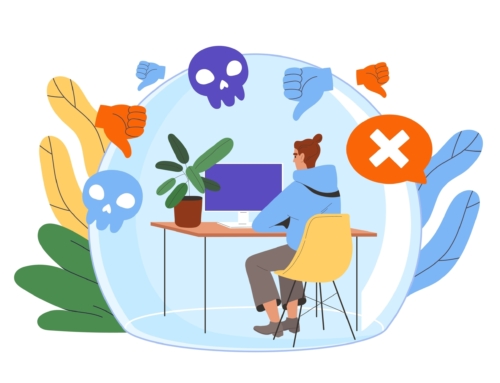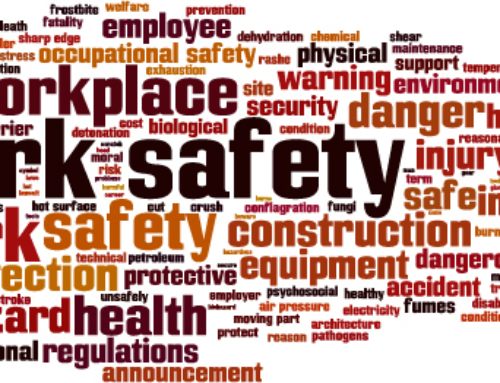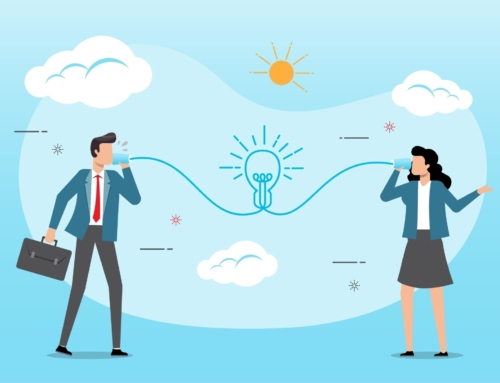People are resilient, there is no doubt about that, look back in history and read about the struggles and suffering people have endured. So, the question is “given we are living in probably the most stable, safe, and balanced environment in the history of mankind, why are we suffering mental health issues at an alarming and increasing rate?”
The stable and safe environment we have created for ourselves is an illusion. We have built a world that is so complex that we are actually struggling and many of us do not even know it. We take stress in our stride as it if is normal, until it breaks through and we break down.
Why do I say that?
Research shows that the part of the brain that controls our reaction to stressful events is so primitive that it cannot tell the difference between a sabre tooth tiger rushing into the cave and the complex report that has an impossible deadline. One is obviously an immediate short-term danger and we go into Fight Flight or Freeze; however, the other stressor is not so immediate and obvious, but our primitive reaction stays the same and it has the same negative effect on the body.
The level of stress we experience is related to our exposure to environmental stressors. Exposure has two components: duration and magnitude. Something that endangers us immediately has a high magnitude but a low duration, stressful work may be lower magnitude, but the duration can be extensive. Of course, stressors can cause two types of stress; Eustress and Distress. Eustress is good, it motivates us to achieve, focus and deliver outcomes, whilst distress leads to strain, which is when we get hurt (mentally and physically). Trouble is, many times we, our managers, or the company we work for are unaware of which stress is being created, for how long, or to what magnitude. Everyone is different, what causes Eustress for one person may causes Distress for another. We also need to consider in this equation, external and internal motivators. Victor Frankl’s work in this area demonstrated that people perseverance, stamina and resilience was strongly enhanced by having a goal, purpose, or reason to live. Our resilience is based on the ‘what’s in it for me’ and that can be moving away from pain (losing my job) which is not a long-term motivation through to moving toward pleasure (getting that promotion) until that goal is lost and then there is the potential for a crash (depending on our own level of Ego).
We find ourselves in a state of high anxiety over long periods of time and without a break.
Looking at the average workplace, it seems we never get a break, the internal mental system that protects us from immediate danger (Magnitude) should subside as we escape the danger and relax, but in our current environment it is constant (Duration). We find ourselves in a state of high anxiety over long periods of time and without a break. Our constant contact with the outside world through phones and technology further exasperates the situation, we never switch off from work. For most people, a weekend in full relaxation isn’t possible and if by some miracle it does happen it still isn’t enough, most people I know don’t go into relaxation mode until 3 or 4 days into leave and away from phones and emails.
We all have our weakness and insecurities, there has been a lot of research already done in the coaching industry around triggers of emotional behaviour – anytime we generate an emotional response we are going into some form of stress.
Triggers lead to anxiety, and triggers can be anything that elicits an emotional response. Triggers and the opportunity to activate them are characteristics of our modern environment. David Rock lists 5 in his SCARF model:
- Status
- Certainty
- Autonomy
- Relatedness
- Fairness

Work deadlines, promotions, bullying, harassment etc. are all activating one or more of these triggers to different extents in different people in different environments.
Triggers usually start slow and build up, when we demonstrate reactive behaviour, we are usually already in the top 20% of our triggers, for the previous 80% we are just in building pattern. Most people never recognise when the trigger starts, and their behaviour comes as a surprise to them and their colleagues. It begins with a physical response, then moves into a feeling or emotional response, starts the thinking process, then finally into a behaviour. When I activate multiple triggers in an individual over an extended time, the individual may be sitting at 70% triggered all the time, therefore it takes very little to push them over the edge. The response is not always aggressive, sometimes the trigger activates freeze or flight behaviour which looks like withdrawal, this response is no less damaging than the aggressive response. The pressure continues to build.
There is an enormous interest in having difficult conversation in the workplace at the moment, I put this down to people who are operating in the top quartile of triggering and behaving (through speech) in a way that is disengaging their staff, not engaging or leading.
If a colleague is walking around 70% triggered all the time, they are filling their system with adrenaline and all the chemicals that were initially created for their safety. Extended exposure to these internally generated chemicals is dangerous and unhealthy. For their colleagues, they see a ticking time bomb and are likely to react in unexpected ways, withdrawing from them, disengaging, generally avoiding them. This is not helpful.
We send our special forces soldiers to war, they are the most mentally tough people we can find in our society, and yet they are, in many cases, unable to wind back the triggers that can set them off. I once heard PTSD described as being in a state of constant alert, perpetually on the edge and the exhaustion and health issues that creates. If our toughest soldiers are not immune to it, then how would we expect everyday employees to deal with it.
The questions we all need to be asking ourselves:
- Do we know what triggers us?
- How often and to what extend are we exposed to those triggers?
- Do we understand enough about ourselves to recognise when we are over stimulated?
- What are we doing everyday for our own mental health?
- Do we really understand the consequences of ignoring it?
- What is your work, office colleagues and leadership doing about it?

I hear it all the time in the workplace “we need to do more with less” in an increasingly complex environment. Our mental health is a valuable but finite state of being. ‘More with less’ is not a sustainable linear expectation and churning through people because someone ‘can’t hack it’ or sending them off to a training program to learn to become ‘more resilient’ is unreasonable. In fact, from an OH&S point of view, it might also be illegal. If a person is exposed to a stressor, and there is an expectation that it could cause harm, the Employer then has an obligation to reduce the exposure, so far as is practicable (SFAIRP). Letting people go is a cop out and failure to be accountable. That is not a quality of a good line leader.
Anything you can do to disconnect yourself from the triggers is going to be good for you, learning an instrument, having a hobby, doing exercise, meditation, whatever it takes to disconnect yourself from the stimuli that triggers emotional behaviours is going to be positive for you.
Zen Buddhism talks about ‘attachments’, which is just another way of looking at Ego and triggers, your ‘attachments’ can be defined as your motivators, your desires, and your wants and how much value you place on these. In other words, how strong your attachments are links to the magnitude of the impact when the world is not meeting your expectations. And there are many other ways of looking at your conscious and unconscious motivators (PRINT is another psychometric tool we use to measure this).
What are you doing for your mental health?
For most people I know, it was not a slow, understandable decline, it is a sudden dive that seems almost impossible to recover from, and once at the bottom it can take months and even years to recover.
Mental health issues are growing and serious, in 2018/19 Australia spent $10.6 Billion on mental health. Workers’ compensation payments for mental health related work issues far outstrips, on average, the average payment for a physical injury.
This is an issue we all need to be paying attention to, people are not robots who can be loaded up, emotional triggered and expected to keep ploughing through.
What are you doing about your mental health or the mental health of your colleagues? For the sake of yourself, your family your work and your community, do not ignore it.














Dr Susan Roberts says: